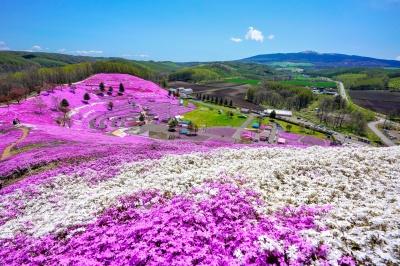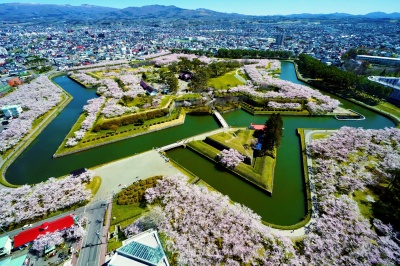How the Sharing of Ainu Culture Became One Man’s Lifework

Many people with interest in Japan’s history will have heard of the Ainu, the native inhabitants of the country’s northernmost prefecture of Hokkaido. While Hokkaido was annexed and became part of Japan in 1869, the Ainu have a history of living in the lands around the Sea of Okhotsk (some of which are presently Russian territory) that is at least 1,000 years older. Similar to many other settler countries such as the USA, Canada or Australia, the relationship between the indigenous Ainu and the colonizers coming from mainland Japan has been complicated – especially immediately following annexation and up to the Second World War. The Ainu were afforded Japanese citizenship and the accommodating legal rights, but with this came a societal expectation to assimilate completely, and many were forced to give up their heritage to be able to function in Japanese society. With the Ainu population decreasing drastically in recent decades, Hokkaido’s government has made numerous investments in preserving and showcasing the Ainu’s traditions and culture, culminating in the opening of the Upopoy National Ainu Museum and Park in 2020. To understand more about the Ainu, we talked to one man who is a living embodiment of this complicated history, but who nevertheless has made it his vision to share Ainu culture through musical performances, designing art and cultural events.
- * Please note that the text shown on this page includes machine translations.
Profile
Inheritor of Traditional Ainu Culture, Designer of Ainu Designs
Mr. Motoi Ogawa
Born in Sapporo in 1972, Ogawa is an Ainu roots musician who plays the tonkori (Sakhalin Ainu five-stringed zither) and mukkuri under the stage name ToyToy (meaning "soul of the soil" in Ainu). He is also known as an Ainu pattern paper cut artist who creates accessories and other items with Ainu patterns designed in paper cut-outs.
Learning about Ainu Culture
That man is Motoi Ogawa, known primarily by his stage name ToyToy. Born in 1972, he grew up in an Ainu community, where he was introduced to a lot of the culture he would later come to share through his work. At the time, however, he was struggling with assimilationist sentiment which forced him to turn away from his heritage. “As a kid, I felt like an outsider. I kept asking myself: Why am I Ainu? Why am I different?” Indeed, while he was raised within a community of his peers, stepping outside into the society at large meant constant reminders that he was different. Nowhere was this as clear as when he started to go to school. “I was the only Ainu kid in my class, and people were far less receptive to us back then. It was a constant struggle.” He decided to hide his identity as best he could, but as a young adult ended up moving to Okinawa to get away from it all. This would prove to be life changing.
“In Okinawa, when I started to get over my inferiority complex and told people I was Ainu, I would get an entirely different reaction than back home. People did not seem to mind and welcomed me with open arms as part of their community.” Okinawa is another place with a history separate from that of mainland Japan, drawing most of its culture and traditions from the Ryukyu Kingdom. “That is probably why they could sympathize with my experiences.” ToyToy finally felt free to be who he is. “At age 18, I became comfortable with being Ainu. It was as if a huge weight had been lifted off my shoulders. I was free.” It was in Okinawa where he was also introduced to music, which would become the first bridge back to his heritage. “A member of a local band asked me to sing an Ainu song and berated me when I said I did not know any. I remember it well, that feeling of embarrassment, of not knowing where I came from.” He decided to return home and engulf himself into the culture of his forefathers.
Creating Ainu Patterns
First, he went back to his family, trying to learn traditional Ainu songs from his grandparents. “When they started singing our songs, I felt a part of my past come back to me, a part of my past I had been trying to hide for years. Every song they shared with me, I remembered from when I was a child.” ToyToy realized he knew way more about Ainu culture than he had led himself to believe. “All of those experiences I made with my family and community at an early age were still a part of me. I had just bundled them up and forgot about them. However, when I returned to Hokkaido, it was as if this part of me was swelling up from the inside, itching to get out.” While this reaffirmed his pride in being Ainu, he still had a deep grudge against the society that had marginalized him for so many years. “While I learned to appreciate my heritage, I still did not know how to function as Ainu in Japanese society.” A young musician in his 20s, ToyToy struggled to find a steady footing. “There were times I would take the money I made from a show and drink it away the same night.”
He began to dive deeper into Ainu culture, often spending all night making traditional paper cutouts. However, he was still lost. “Similar to how I had escaped my Ainu heritage through moving to Okinawa, I was now escaping Japanese society by being holed up alone making Ainu designs.” Eventually, he knew this pattern had to stop.
Finding a place to belong
“I began crafting designs with the goal to share them with others. First it was pendants, then shirts. I thought that through sharing Ainu designs in a practical way, I could lead more and more people to appreciate our culture.” This opened new opportunities for ToyToy. “Designing Ainu patterns allowed me to connect with so many people, other designers and craftsmen from all over the prefecture. I finally felt that a path had opened up for me.” While it took almost four decades, he had found his lifework.
“I found my place in Japanese society. Despite all the rejection I had experienced throughout my life, and all the pent-up anger I was still dealing with, it was liberating to forge this path through my Ainu heritage.” As one of the first to focus exclusively on Ainu designs, ToyToy was and is a pioneer. Today, he has expanded to a broad range of activities. He still designs traditional Ainu cutouts, sometimes even combining them with Japanese Washi and Chiyogami patterns to produce a harmony between the two cultures. At the same time, he also found his way back to music, giving Tonkori (five-stringed harp from Sakhalin) and Mukkuri (Ainu bamboo jaw harp) concerts in addition to workshops on Upopo singing and Rimse dancing. He has even started to work with Hokkaido Prefecture, which has taken him as far as the Tokyo Olympics, where he represented the Ainu in a showcase about Hokkaido. ToyToy’s inspiring life story even led to him appearing on stage at a TEDx talk in Sapporo.
Shaping Hokkaido's Culture
“Today, I truly believe that the Ainu and Japanese cultures can coexist.” ToyToy’s story is one of struggling with identity, of first discarding and then taking pride in one’s heritage. “In the end, me being Ainu has defined almost every aspect of my life, for better or for worse.” Today, he can look back at all the challenges he has overcome, which have in turn given him a clear vision for the future. “I want to connect people across cultures and on a human level. This is a lesson that is applicable on a global scale, one that recognizes our similarities as humans over our perceived differences in terms of ethnicity and culture.” We are sure that he will continue to do just that, inspiring many more on the way. “Everything I do rests on the belief that handing down the gift of our ancestors to future generations will contribute to molding the tradition of Hokkaido in the future.”
Ranking of popular articles
- Hokkaido Summer Travel Guide

- https://www.visit-hokkaido.jp/en/feature/travelguide_summer
- Hokkaido Spring Travel Guide

- https://www.visit-hokkaido.jp/en/feature/travelguide_spring
- Here are the recommended cherry blossom viewing spots!

- https://www.visit-hokkaido.jp/en/feature/sakura
- When is the best time to see lavender? Recommended Lavender Spots in Hokkaido

- https://www.visit-hokkaido.jp/en/feature/lavender
- Best Places to View Flowers in Hokkaido vol. 1

- https://www.visit-hokkaido.jp/en/feature/best-places-to-view-flowers-in-hokkaido-vol-1



